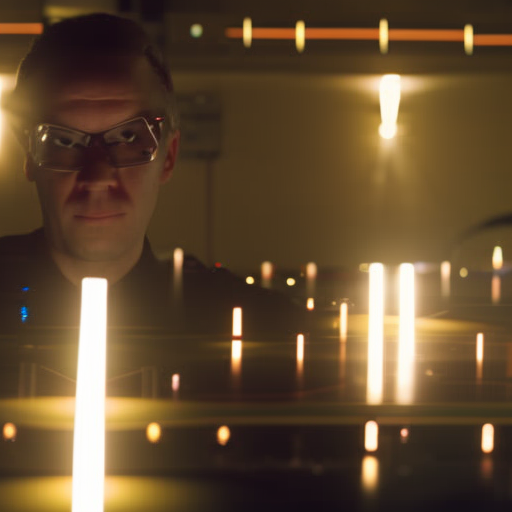Nuclear Reactors: Harnessing the Power of the Atom
Nuclear reactors are complex systems that utilize nuclear reactions to generate heat, which is then converted into electricity. These reactors play a crucial role in the production of clean, efficient, and reliable energy. By harnessing the power of the atom, nuclear reactors have the potential to meet the world’s growing energy demands while minimizing greenhouse gas emissions.
How Nuclear Reactors Work
Nuclear reactors operate on the principle of nuclear fission, where the nucleus of an atom is split into two smaller nuclei, releasing a significant amount of energy. This process is achieved by bombarding a heavy nucleus, such as uranium-235 or plutonium-239, with neutrons. When the nucleus absorbs a neutron, it becomes unstable and splits into two smaller nuclei, along with the release of additional neutrons and a large amount of energy.
Types of Nuclear Reactors
There are several types of nuclear reactors, each with its own design and characteristics. The most common types include:
Pressurized Water Reactors (PWRs): PWRs are the most widely used type of nuclear reactor. They use water as both a coolant and a moderator. The water is kept under high pressure to prevent it from boiling, and it transfers heat from the reactor core to a secondary loop, where it produces steam to drive a turbine and generate electricity.
Boiling Water Reactors (BWRs): BWRs also use water as both a coolant and a moderator. However, unlike PWRs, the water in BWRs boils directly in the reactor core, producing steam that drives the turbine. This design eliminates the need for a separate steam generator.
Heavy Water Reactors (HWRs): HWRs use heavy water, which contains deuterium, as both a coolant and a moderator. The heavy water slows down the neutrons more effectively than regular water, increasing the likelihood of fission. HWRs are commonly used in Canada and India.
Gas-Cooled Reactors (GCRs): GCRs use carbon dioxide or helium gas as a coolant. The gas transfers heat from the reactor core to a gas turbine, which drives an electrical generator. GCRs are known for their high-temperature operation, making them suitable for applications such as hydrogen production.
Advantages of Nuclear Reactors
Nuclear reactors offer several advantages over other forms of energy generation:
Low Greenhouse Gas Emissions: Nuclear power plants produce virtually no carbon dioxide or other greenhouse gases during operation, making them a clean energy source that helps combat climate change.
High Energy Density: Nuclear fuel contains a tremendous amount of energy, allowing nuclear reactors to generate large amounts of electricity from a relatively small amount of fuel.
Base Load Power: Nuclear power plants can operate continuously, providing a stable and reliable source of electricity. This makes them well-suited for meeting the base load demand, which is the minimum amount of electricity required at all times.
Energy Independence: Nuclear power reduces dependence on fossil fuels, which are often imported from other countries. By diversifying the energy mix, countries can enhance their energy security.
Challenges and Concerns
While nuclear reactors offer numerous benefits, they also pose challenges and concerns:
Radioactive Waste: The spent fuel from nuclear reactors is highly radioactive and requires careful handling and disposal. Long-term storage solutions for radioactive waste remain a significant challenge.
Cost and Construction Time: Building a nuclear power plant is a complex and expensive process. The high upfront costs and lengthy construction times can make nuclear energy less economically viable compared to other forms of energy.
Safety: Nuclear accidents, such as the Chernobyl and Fukushima disasters, have raised concerns about the safety of nuclear reactors. Strict safety measures and regulations are necessary to prevent accidents and ensure the protection of both workers and the public.
Proliferation of Nuclear Weapons: The use of nuclear technology for peaceful purposes can potentially be misused for the development of nuclear weapons. International safeguards and non-proliferation agreements are in place to prevent the misuse of nuclear materials.
The Future of Nuclear Reactors
The future of nuclear reactors lies in the development of advanced designs and technologies. These include:
Small Modular Reactors (SMRs): SMRs are smaller, more flexible reactors that can be built in factories and transported to the site. They offer enhanced safety features, reduced construction costs, and the ability to integrate with renewable energy sources.
Generation IV Reactors: Generation IV reactors are a new class of advanced reactors that aim to improve safety, reduce waste, and increase efficiency. These reactors utilize innovative designs, such as molten salt, gas, and liquid metal coolants.
Fusion Reactors: Fusion reactors aim to replicate the process that powers the sun by fusing hydrogen atoms together, releasing vast amounts of energy. While fusion power is still in the experimental stage, it holds the promise of virtually limitless, clean energy.
In conclusion, nuclear reactors are a vital component of our energy infrastructure, providing a reliable and low-carbon source of electricity. Despite the challenges and concerns associated with nuclear energy, ongoing research and development efforts are focused on making reactors safer, more efficient, and economically viable. As the world transitions to a more sustainable energy future, nuclear power will continue to play a significant role in meeting our growing energy demands.












